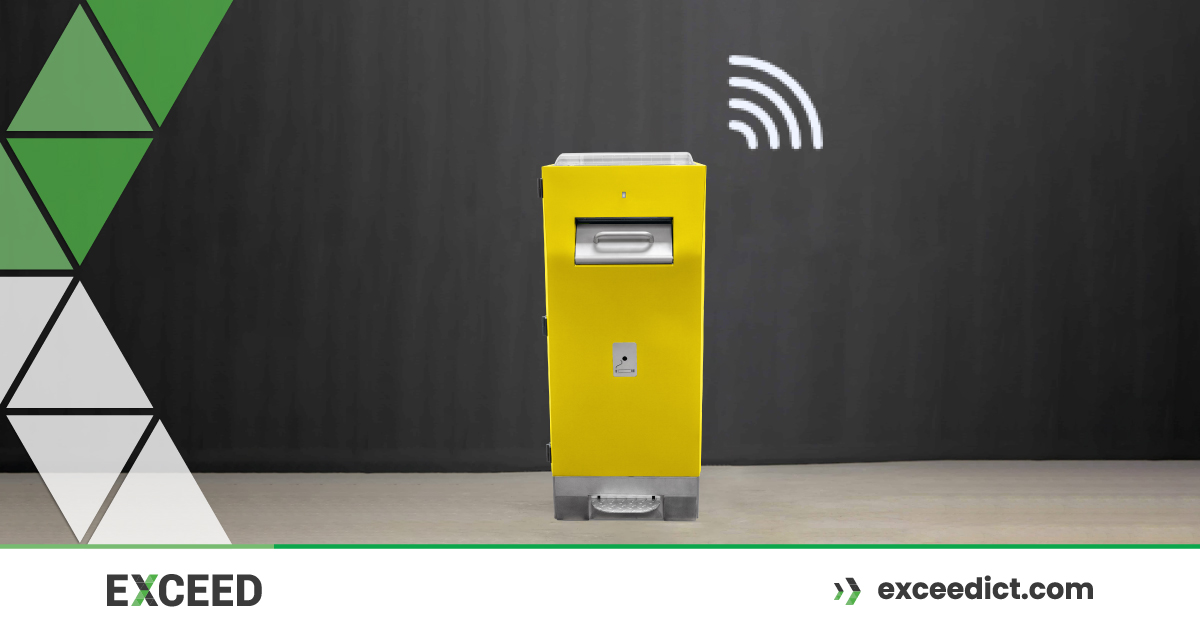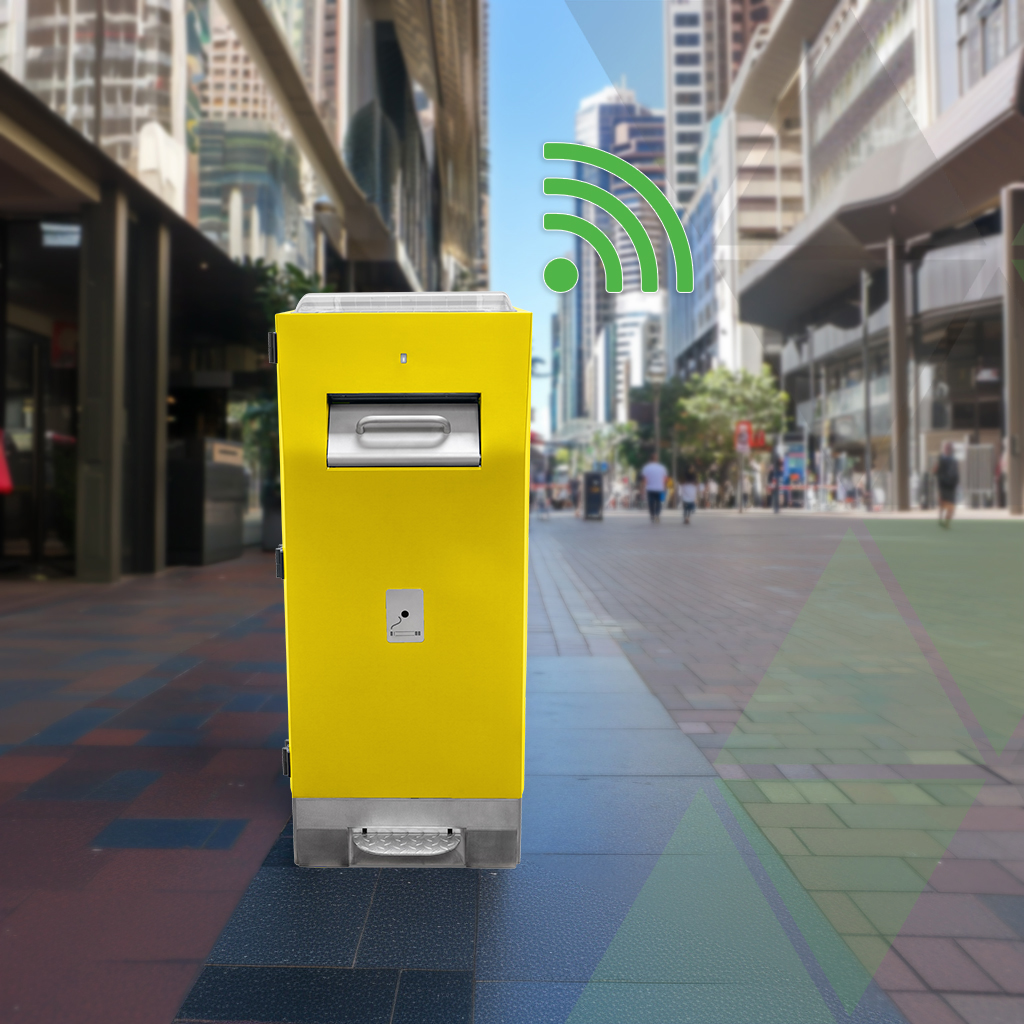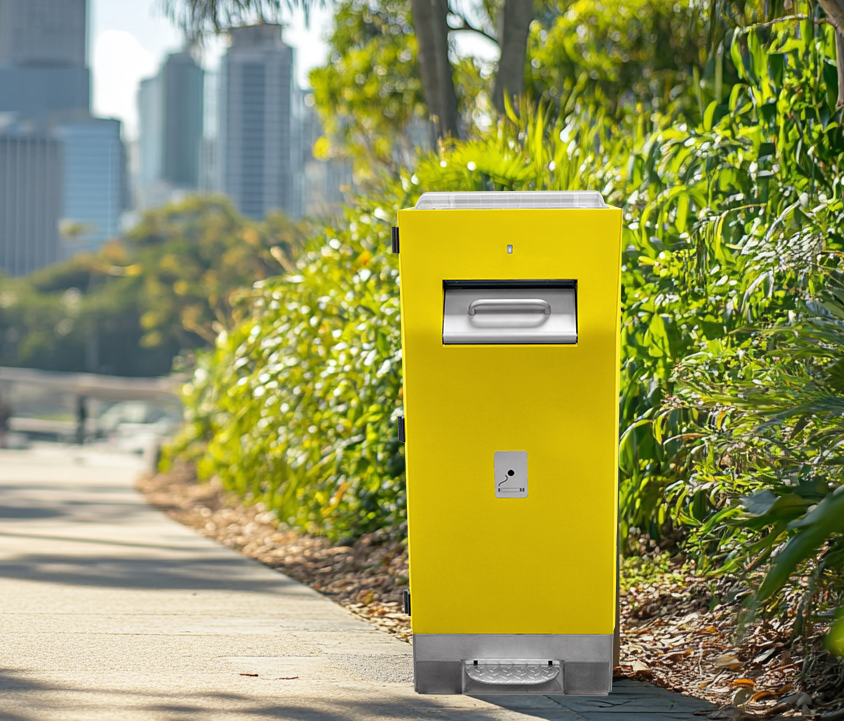
Waste management in Australia faces several challenges, from rising landfill costs to the need for sustainable practices in our growing urban centres. With increasing pressure on local councils and private businesses to keep public spaces clean and efficient, smart bin sensor technology has emerged as a groundbreaking solution. This technology not only improves the overall hygiene of our communities but also helps in reducing operational expenses and environmental impact.
In this blog, we will explore how smart bin sensor technology works, its benefits, and its role in creating cleaner, more sustainable cities across Australia.
What is Smart Bin Sensor Technology?

Smart bin sensor technology refers to the integration of sensors-typically ultrasonic or IoT-based-into waste bins to monitor fill levels. Unlike traditional waste management methods that rely on scheduled collections, this technology provides real-time data on the status of waste bins. The sensors continuously measure the amount of waste inside a bin and wirelessly transmit this data to a central platform. This allows waste management teams to make informed decisions on collection timings, ensuring that bins are only emptied when necessary. By doing so, it not only prevents waste overflow but also helps in planning more efficient collection routes.
How Smart Bin Sensor Technology Works?
Sensors in Smart Bins
Smart bins are equipped with sensors, most commonly ultrasonic sensors, that work by sending sound waves towards the waste. When these waves hit the surface of the waste, they bounce back to the sensor, which then calculates the distance. This measurement indicates how full the bin is. In some cases, additional IoT sensors are integrated to monitor other parameters, such as temperature or the presence of hazardous materials. This combination of sensors ensures accurate, real-time readings that form the basis of data-driven waste management.
Data Transmission & Real-Time Monitoring
Once the sensors collect the fill level data, it is transmitted wirelessly using technologies such as Wi-Fi, Bluetooth, or dedicated IoT networks. This data is then sent to a central platform, where it can be accessed by waste management teams. The real-time aspect is crucial; it allows councils and businesses to monitor the status of multiple bins across a city or facility simultaneously. With this information at their fingertips, waste management operators can promptly respond to any issues, such as bins nearing capacity, thereby reducing the risk of overflow and the associated health hazards.
Data-Driven Waste Collection Optimisation
The collected data does more than just monitor fill levels-it provides valuable insights that help optimise waste collection routes. By analysing trends and usage patterns, waste management teams can schedule collections only when bins are full or nearing capacity. This data-driven approach means that collection trucks are dispatched more efficiently, reducing unnecessary trips. The result is a reduction in fuel consumption, lower labour costs, and less traffic congestion, all of which contribute to a more sustainable waste management system.
Key Benefits of Smart Bin Sensor Technology
Optimised Collection Routes
One of the primary benefits is the ability to optimise collection routes. Instead of following a fixed schedule, waste collection services can use real-time data to determine the most efficient times to empty bins. This targeted approach reduces fuel consumption and cuts down on labour costs, leading to a more economical waste management process. Additionally, fewer collection trips mean less disruption to local traffic and a smaller carbon footprint.
Prevention of Waste Overflows
Waste overflows are not only unsightly but can also pose significant health risks by attracting pests and spreading disease. With smart bin sensor technology, local councils and businesses can prevent these issues by ensuring bins are emptied before they overflow. The real-time monitoring system sends alerts when a bin is close to capacity, allowing for timely intervention. This proactive approach helps maintain cleaner public spaces and reduces the need for emergency clean-up operations.
Better Waste Management Insights
The data gathered from smart bins offers invaluable insights into waste patterns and behaviours. By analysing this data, councils and businesses can identify high-waste areas, adjust bin placements, and improve recycling rates. Over time, these insights help in refining waste management strategies, ensuring that resources are allocated more effectively. This continuous feedback loop allows for ongoing improvements in waste collection and environmental sustainability.
Environmental Sustainability
Smart bin sensor technology plays a significant role in reducing the envi.ronmental impact of waste management. By cutting down on unnecessary collection trips, there is a direct reduction in carbon emissions from waste collection vehicles. Furthermore, improved data analysis supports better recycling practices and waste segregation, contributing to a healthier environment. This technology is a key component of broader sustainability initiatives, making urban areas cleaner and more energy-efficient
Applications of Smart Bin Sensor Technology
Public Spaces

In public spaces such as parks, streets, and shopping centres, maintaining cleanliness is essential for community well-being and tourism. Smart bins help local councils manage waste more efficiently, ensuring that bins are emptied only when needed and preventing unsanitary conditions. This technology is particularly beneficial in high-traffic areas where waste accumulation can quickly become a problem.
Commercial Buildings
Commercial buildings, including offices, restaurants, and schools, also benefit from smart bin sensor technology. Businesses can reduce waste management costs by avoiding unnecessary collections and maintaining cleaner facilities. Moreover, real-time monitoring allows for a swift response to waste build-up, ensuring that the environment remains hygienic and pleasant for employees and visitors alike.
Smart Cities & Sustainability Initiatives
As Australia continues to embrace smart city initiatives, integrating smart bin sensor technology becomes increasingly important. This technology complements other smart infrastructure solutions, such as intelligent traffic management and energy-efficient lighting, to create a more connected and sustainable urban environment. By incorporating smart bins into their overall strategy, cities can enhance public services while reducing operational costs and environmental impact.
Examples of Smart Bin Sensors in Action
Several Australian councils and businesses have already started implementing smart bin sensor technology with positive results. For instance, some local councils have reported significant cost savings and reduced instances of overflowing bins in busy shopping precincts and public parks. In commercial settings, companies have seen improvements in waste collection efficiency and overall hygiene. These early adopters provide a blueprint for how the technology can be scaled across various sectors, contributing to a cleaner, more sustainable Australia.
Challenges & Future of Smart Bin Sensor Technology
Despite its many benefits, smart bin sensor technology is not without challenges. The initial setup cost can be a barrier for some councils and small businesses, and there may be technical issues related to sensor maintenance or data security. However, as the technology matures and becomes more widespread, these challenges are likely to diminish. Future developments may include advanced predictive analytics and AI-driven insights that further enhance waste management efficiency. With government incentives and a growing focus on sustainability, the future of smart waste management in Australia looks promising.
Conclusion
Smart bin sensor technology is transforming waste management by offering a more efficient, data-driven approach to collection and disposal. From optimised collection routes and prevention of overflows to enhanced waste management insights and environmental sustainability, the benefits are clear. As more Australian councils and businesses adopt this technology, we can expect cleaner public spaces, reduced operational costs, and a significant positive impact on our environment. Embracing smart bin sensor technology is a step towards a more sustainable and efficient waste management system for all Australians.
We Also Provide
Telecoms Expense Management, Device Deployment, Mobile Fleet management, Telstra enterprise Mobility, Telstra mobility Managed Services.
Improve Business Core values, Business Consulting, Network Management, Telstra Expense Management and many more Services.
Frequently asked questions (FAQs) about smart bin sensor technology
What is smart bin technology?
Smart bin technology refers to waste bins equipped with advanced sensors that monitor fill levels and transmit real-time data to a central platform. This technology optimises waste collection by ensuring bins are emptied only when necessary, reducing operational costs and environmental impact. Smart bins are widely used in public spaces, commercial buildings, and smart city initiatives to improve efficiency and hygiene in waste management.
What sensors are used in smart bins?
Smart bins typically use ultrasonic sensors, which measure the distance between the sensor and the waste to determine fill levels. Some bins also incorporate IoT sensors that enable wireless data transmission. Additional technologies like infrared, weight-based, or gas sensors may be used to detect specific waste conditions, such as temperature changes, hazardous gases, or odour levels, enhancing overall waste management and safety.
How do bin sensors work?
Bin sensors function by using ultrasonic waves or other sensing technologies to measure the waste level inside a bin. These sensors send signals that reflect off the waste surface and calculate the distance, providing accurate fill-level readings. The data is then transmitted via Wi-Fi, Bluetooth, or IoT networks to a central platform, allowing waste management teams to monitor bin statuses in real time and schedule collections efficiently.
What sensors are used in waste management?
Waste management employs various sensors, including ultrasonic sensors for measuring waste levels, optical sensors for detecting recyclables, and gas sensors to monitor hazardous emissions. Weight-based sensors are also used to measure bin load, helping optimise waste collection logistics. IoT-connected sensors play a crucial role by enabling remote monitoring and predictive analysis, ensuring waste disposal processes are more efficient and environmentally friendly.
What are the benefits of smart bin sensor technology?
Smart bin sensor technology helps optimise collection routes, reduce operational costs, and prevent bin overflows. It enhances hygiene by ensuring timely waste removal, minimises carbon emissions from unnecessary truck trips, and improves recycling efforts through better data analysis. Additionally, councils and businesses benefit from real-time waste monitoring, enabling them to allocate resources more efficiently and maintain cleaner urban environments.
Where is smart bin sensor technology used?
Smart bin sensor technology is widely used in public spaces, such as parks, shopping centres, and city streets, where high foot traffic generates significant waste. It is also implemented in commercial buildings, offices, and schools to streamline waste collection. Additionally, smart bins are a key component of smart city initiatives, helping governments and councils create more efficient and sustainable urban waste management systems.
How does smart bin technology improve sustainability?
By reducing unnecessary waste collection trips, smart bin technology lowers fuel consumption and carbon emissions from garbage trucks. The data-driven approach also helps cities improve recycling rates, identify high-waste areas, and manage waste more efficiently. Additionally, preventing overflowing bins reduces environmental pollution, making urban areas cleaner and healthier. This technology aligns with sustainability goals by promoting responsible waste disposal and reducing landfill waste.
What are IoT-connected smart bins?
IoT-connected smart bins are waste bins equipped with internet-enabled sensors that transmit real-time data to a cloud-based platform. These bins provide continuous monitoring, allowing waste management teams to track fill levels, detect anomalies, and optimise collection schedules remotely. IoT connectivity enhances efficiency, reduces costs, and improves environmental sustainability by minimising unnecessary waste pickups and ensuring bins are emptied before overflowing.
Can smart bin sensors detect different types of waste?
Yes, some smart bin sensors can differentiate waste types using optical sensors or weight-based technology. Optical sensors identify materials such as plastics, glass, and metals, helping with automated recycling processes. Gas sensors can detect hazardous or decomposing waste, improving safety in waste management. These advanced features make smart bins more efficient by encouraging proper waste segregation and enhancing recycling efforts.
Are smart bins cost-effective for businesses and councils?
Although smart bin technology requires an initial investment, it provides long-term cost savings by reducing fuel, labour, and maintenance expenses. By optimising waste collection schedules, councils and businesses can lower operational costs while maintaining cleaner spaces. Additionally, data-driven waste management helps improve resource allocation, making smart bins a cost-effective and sustainable solution for public and private sectors in the long run.


